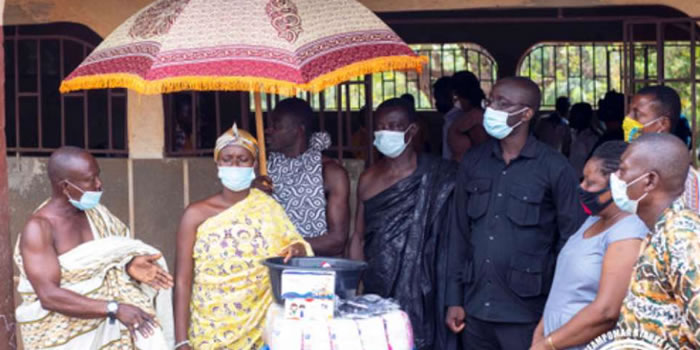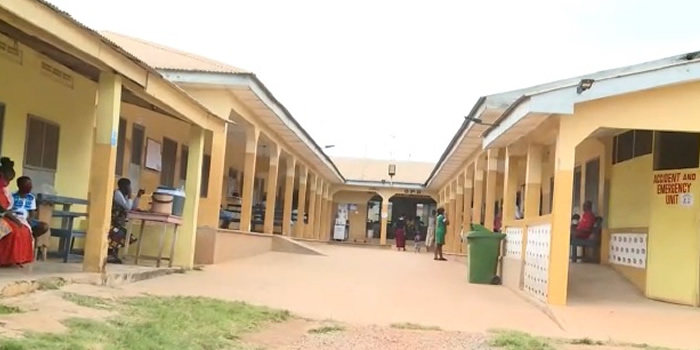

The district has been divided into 6 sub-districts for the purposes of effective health delivery.
Health Facilities
Health facilities are scattered all over the 6 sub-districts and are managed by various stakeholders. The next table shows the various health facilities in the district.
It is evident from the above table that the district has not got a Government Hospital. The Asamang S.D.A Hospital serves as a district hospital and receives all referral cases. The district in its bid to have a government district hospital especially in a central location has made moves to upgrade the Agona Health Centre into a district hospital. The programme started with the provision of a ward facility to the centre. Again, under the Kfw/District Town IV Project, a theatre and other ancillary facilities have been provided to upgrade the centre.
Again, the D.A. in its bid to improve upon all health institution has on frequent occasion rehabilitated structures and provided additional facilities. A typical example is the Tetrem Health Centre.
Manpower level
The district has had its fair share of staff attrition in the health sector. The district is understaffed in the area of heath. Currently, the district has only one (1) Doctor who is even on study leave, 6 medical Assistants and no pharmacist at post. The table below shows the ratio of each category to the population in the district.
From table 1.6.4.2.2, out of the three (3) Medical Officers at post in 2002, 2005, there was only one (1) at post in 2005. He is even on study leave. It is also clear from the table that staffing situation in the health sector is not the best. This phenomenon is not restricted to the district but a national one.
HIV/AIDS
The first case of the disease in the district was diagnosed in 1993 and by the year 2006, an estimated 200 adults and children were HIV positive. The table below shows the trend of reported cases since 2003
From the table above, it is clear that the menace is a threat to the development of the district. This is so because in 2003, out of a total of 520 blood donors, 3.08% were found to be HIV positive. The figure rose to 4.24% out of the 354 donors.
In 2005, 14.3% of blood donors (306) tested positive. Again, in 2003, out of 647 screened cases for HIV, 77 forming 11.9% were found to be HIV positive. The figure rose to 55.24% of 105 screened cases. These trends depict a very serious situation in the district.
Prevention of New Injection and Behavioral
Communicational Change (BCC)
Under this thematic area, the district since the inception of the National response has been working earnestly to keep the menace in check. In this regard, and with the help of the GARfund, selected CBOs/FBOs/NGOs under took activities in B.C.C.
Treatment, Care and support for PLWHAS &OVCs
Until recently, the district underplayed the importance of care and support for PLWHAS. This resulted in stigmatization, dropout among OVCs and high economic burden and HIV/AIDS dependant.
To ameliorate the above, the districts together with support from selected institutions have over the few years implemented policies to economically empower dependants of HIV/AIDS victims. Find below is a summary of interventions in this area over the years.
The support has been in the areas of payment of school fees for OVCS, provision of school uniforms and books, training in batik making for PLWHAS, training in soap making for the PLWHAS etc
Over the years the district has downplayed some thematic areas like coordination and management, resource mobilization and advocacy. There is therefore the need to formulate policies with a holistic approach to the fight against the menace in the district.
Again, in the area of VCT almost all the health institutions in the district have established a VCT centre. The WHO supported the Asamang hospital with the tertiary up of a VCT centre and the creation of a youth centre by the AYA programme in the same hospital.
District Health Insurance Scheme
The implementation of the policy started in the district in 2003 with the establishment of an office and collection of premium. As at Dec. 2006, a total of 56,000 people had been registered and were receiving benefits. Its is the policy of the scheme to cover at least 50 % of the population by the end of the planned period
For tables refer to pdf file attached
Date Created : 5/23/2018 9:19:07 AM











 facebook
facebook
 twitter
twitter
 Youtube
Youtube
 +233 593 831 280
+233 593 831 280 0800 430 430
0800 430 430 GPS: GE-231-4383
GPS: GE-231-4383 info@ghanadistricts.com
info@ghanadistricts.com Box GP1044, Accra, Ghana
Box GP1044, Accra, Ghana